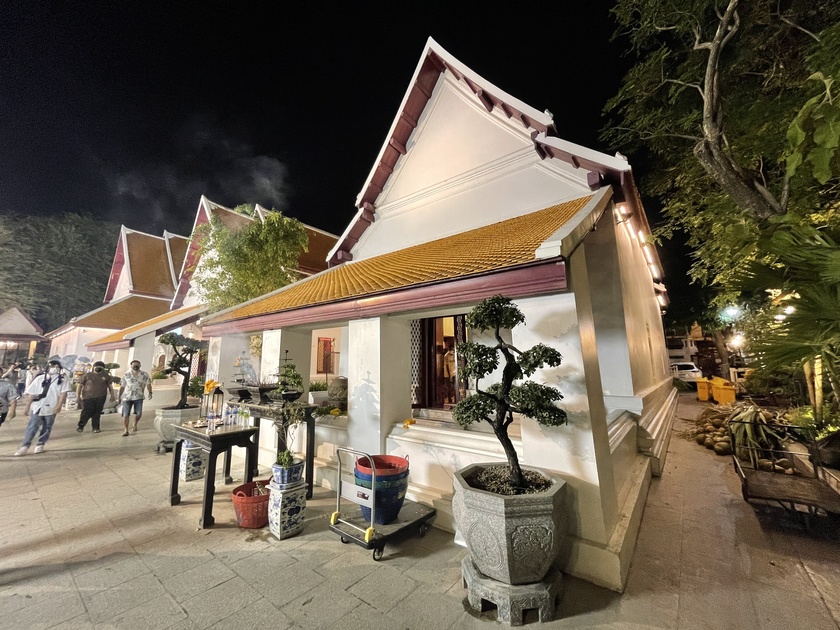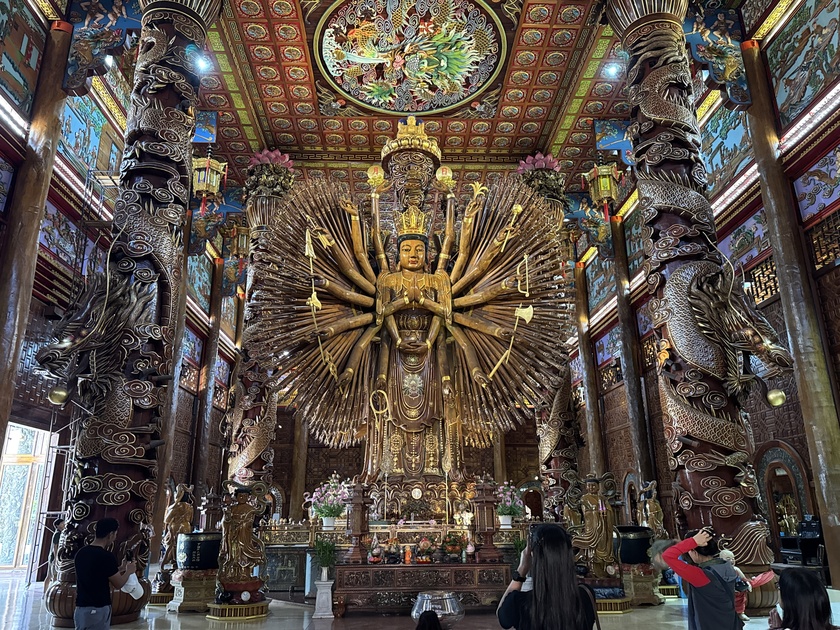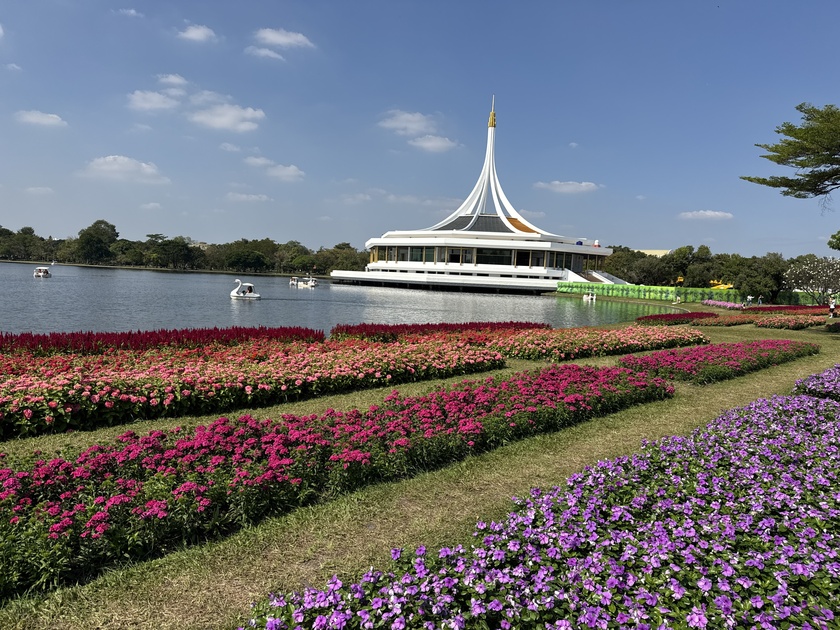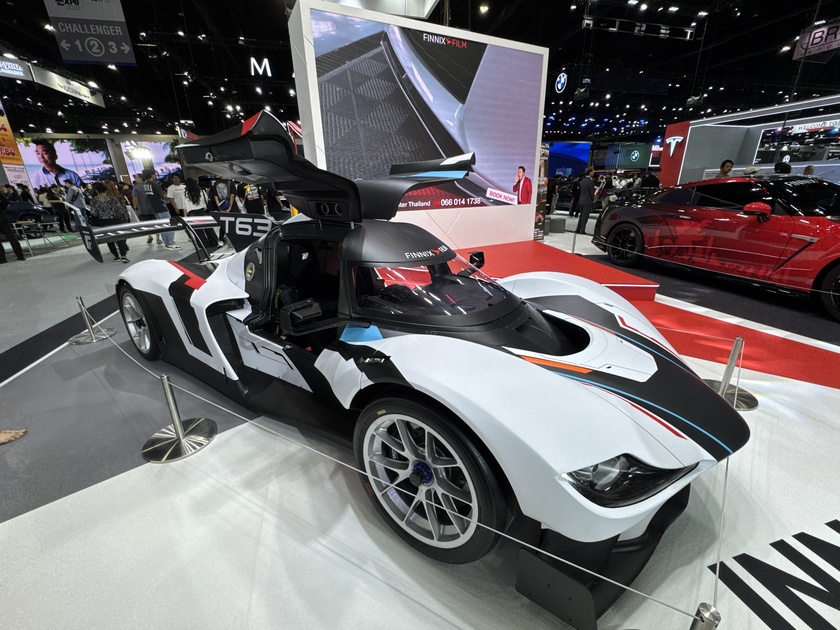Devasathan เทวสถานโบสถ์พราหมณ์ meaning the abode of the gods is a Hindu temple near Wat Suthat in the Phra Nakhon District, Bangkok, Thailand. The temple is the official center of Hinduism in Thailand. The temple is the home of the Court Brahmins, who are descended from an ancient lineage of priests from Rameswaram, Tamil Nadu. The Brahmins perform many important royal and religious ceremonies for the Monarchy of Thailand every year. The temple was founded in 1784 by King Rama I, the founder of the Chakri dynasty.
The temple is enclosed by a white wall. The temple is dominated by three large rectangular buildings, on an East to West axis. Each of the three white structures is a shrine dedicated to a particular Hindu deity.
Phra Isuan Shrine (สถานพระอิศวร) – Shiva.
Phra Phikkhanesuan Shrine (สถานพระพิฆเนศวร) – Ganesha.
Phra Narai Shrine (สถานพระนารายณ์) – Narayana or Vishnu.
A small outdoor shrine to Phra Phrom Shrine (ศาลท้าวมหาพรหม) – Brahma.
The Giant Swing, is located outside in front of the temple, it was once used for a ceremony called the Triyamphway Ceremony (Triyampavai-Tripavai). The ceremony was discontinued in 1935.
https://twitter.com/aendlessjourney
https://youtube.com/@endlessjourneytravels?feature=shares
https://www.instagram.com/p/Cm_TU2ZPdIy/?igshid=Zjc2ZTc4Nzk=
Wat Metta Dharma Bodhiyan (Wat Mettatham Phothiyan) Kanchanaburi Thailand
Due to its amazing 12 meter tall Guan Yin Bodhisattva statues carved in teak wood, this fairly recent temple quickly became the most famous Chinese temple in Kanchanaburi.
The covered courtyard which welcomes you does not suggest what you are going to discover inside: a hall with all the partitions and ceilings in carved teak wood. In the middle of which enthroned, back to back, are the 4 statues of the chinse goddess with 18 arms and a thousand smaller arms with a thousand eyes.
In the peripheral corridors, dozens of unique statues are also made of carved wood. Wat Mettatham Photiyan is set to expand to accommodate even more statues. Hundreds more are already stored to the right of the main hall and are waiting to be installed in the new temple buildings.
In addition to one of the most amazing wooden statues you will ever see the temple is currently building a 165 meter tall, with a base of 108 meter, Buddha Statue. ...
One of the most delightful flower festivals in Thailand, the Suanluang Rama IX Flower Festival is taking place again this year from 1-10 December, 2024. In addition to countless flowers the park hosts a floating market offering trafitional foods and crafts in cooperation with the TAT.
Suan Luang Rama IX สวนหลวง ร.๙, also referred to as King Rama IX Park, is a public park in Bangkok's Prawet District. With an area of 500 rai (200 acres), it is the largest park in the city.
The park was built to celebrate King Bhumibol Adulyadej's sixtieth birthday in 1987, and was opened by the King on 1 December that year. It features extensive botanical gardens, a lake, and a pavilion housing exhibits in honor of the King.
It is a beautiful area and a great break from the hustle and bustle of the city. The park is a great green spot to enjoy the wildlife and nature of the tropics. Countless flowers and trees are there to be photographed.
Suan Luang Rama IX Flower Festival 2025 - ...
The 42nd Thailand International Motor Expo 2025
The Thailand International Motor Expo (commonly known as Motor Expo) is Southeast Asia’s premier automotive showcase, featuring the latest in cars, motorcycles, boats, aircraft, motorsport gear, auto parts, car audio, and accessories.
The 2025 edition, themed “The Magnificent Motor Expo,” runs from November 29 to December 10, 2025, at IMPACT Challenger Halls 1–3 in Muang Thong Thani, Nonthaburi (a northern suburb of Bangkok). With over 42 brands from 8 countries participating, it’s a massive event that attracts around 1.5–2 million visitors annually, blending cutting-edge tech, test drives, and exclusive deals.
Over 42 automotive brands, including AION, Audi, BMW, BYD, Chery, Ford, Honda, Hyundai, Isuzu, Jeep, Kia, Lexus, Mazda, Mercedes-Benz, MG, Mitsubishi, Nissan, Porsche, Suzuki, Tesla, Toyota, Volvo, and Chinese EV giants like XPeng and Zeekr. Plus, independent tuners like M’Z Speed for custom mods.
Heavy emphasis on electric ...














































